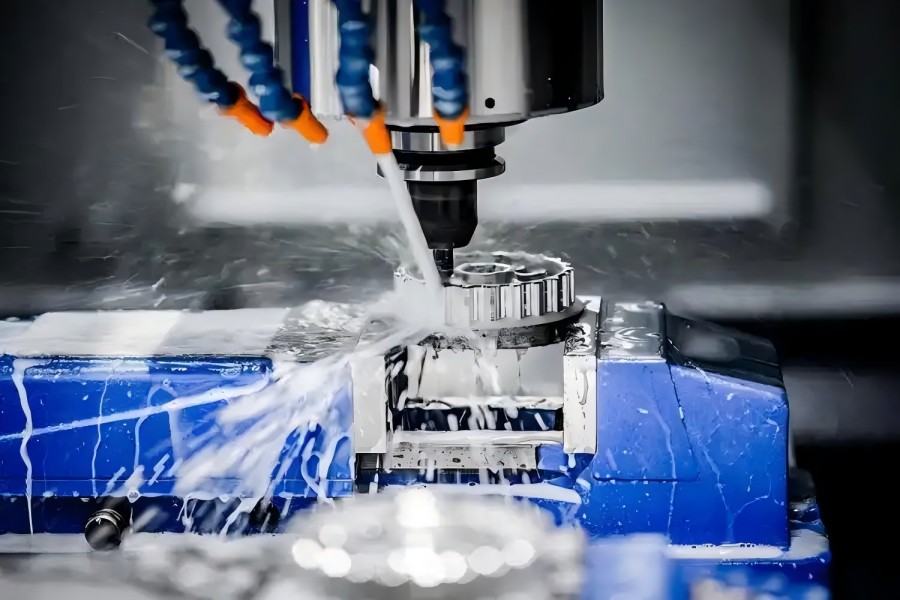Support Categories
Contact Us
020-86988980
- Guangzhou Sinoth Import and Export Co., LTD
Tel: 020-8968-8980
Website:www.gzsynoth.com
Email: belinda@dginfa.com(24 hours online)
Phone: +86 189 2740 6786
Address: No 5, Jinshi Three Street, Shiling Town, Huadu District,Guangzhou City, Guangdong Province
Support
Current Location:Home > Support > Support
Precision CNC Milling and turning technology
Add Time:2025-03-28
Precision CNC Milling and Turning Technology: An Overview
Precision CNC (Computer Numerical Control) milling and turning are advanced manufacturing processes used to produce high-accuracy, complex parts for industries such as aerospace, automotive, medical, and electronics. These technologies rely on computerized controls and high-speed rotating tools to shape materials with tight tolerances (often within microns).
First. CNC Milling
CNC milling involves removing material from a workpiece using rotary cutting tools to create custom shapes, slots, holes, and contours
Key Features:
- Multi-Axis Capability:
- 3-axis: Basic milling (X, Y, Z movements).
- 4/5-axis: Allows complex geometries (e.g., turbine blades, aerospace components).
- Materials: Metals (aluminum, steel, titanium), plastics, composites, and ceramics.
- Applications: Prototyping, molds, engine parts, enclosures.
- Precision: Tolerances as tight as **±0.005 mm** (depending on machine and material).
Advantages:
- High repeatability.
- Suitable for intricate designs.
- Efficient for small to medium batches.
Second. CNC Turning
CNC turning rotates the workpiece while a stationary cutting tool removes material to create cylindrical or conical shapes (e.g., shafts, bolts, fittings).
Key Features:
- Lathe Machines: Use chuck or collet to hold the workpiece.
- Live Tooling: Combines turning and milling (e.g., drilled holes or slots on a turned part).
- Materials: Metals, plastics, and engineered materials.
- Tolerances: Typically ±0.01 mm or better.
Advantages:
- Faster for cylindrical parts vs. milling.
- Cost-effective for high-volume production.
Third. Precision Enhancements
- To achieve ultra-high precision, manufacturers use:
- High-Speed Spindles: Reduce vibration for smoother finishes.
- Coolant Systems: Prevent thermal deformation.
- CMM (Coordinate Measuring Machines): Verify dimensional accuracy.
- Advanced Tooling: Diamond-coated or carbide tools for wear resistance.
Fourth. Industry Trends
- Automation: Robotic loading/unloading for 24/7 production.
- Hybrid Machines: Combine additive manufacturing (3D printing) with CNC.
- AI & IoT: Real-time monitoring for predictive maintenance.
Precision CNC (Computer Numerical Control) milling and turning are advanced manufacturing processes used to produce high-accuracy, complex parts for industries such as aerospace, automotive, medical, and electronics. These technologies rely on computerized controls and high-speed rotating tools to shape materials with tight tolerances (often within microns).
First. CNC Milling
CNC milling involves removing material from a workpiece using rotary cutting tools to create custom shapes, slots, holes, and contours
Key Features:
- Multi-Axis Capability:
- 3-axis: Basic milling (X, Y, Z movements).
- 4/5-axis: Allows complex geometries (e.g., turbine blades, aerospace components).
- Materials: Metals (aluminum, steel, titanium), plastics, composites, and ceramics.
- Applications: Prototyping, molds, engine parts, enclosures.
- Precision: Tolerances as tight as **±0.005 mm** (depending on machine and material).
Advantages:
- High repeatability.
- Suitable for intricate designs.
- Efficient for small to medium batches.
Second. CNC Turning
CNC turning rotates the workpiece while a stationary cutting tool removes material to create cylindrical or conical shapes (e.g., shafts, bolts, fittings).
Key Features:
- Lathe Machines: Use chuck or collet to hold the workpiece.
- Live Tooling: Combines turning and milling (e.g., drilled holes or slots on a turned part).
- Materials: Metals, plastics, and engineered materials.
- Tolerances: Typically ±0.01 mm or better.
Advantages:
- Faster for cylindrical parts vs. milling.
- Cost-effective for high-volume production.
Third. Precision Enhancements
- To achieve ultra-high precision, manufacturers use:
- High-Speed Spindles: Reduce vibration for smoother finishes.
- Coolant Systems: Prevent thermal deformation.
- CMM (Coordinate Measuring Machines): Verify dimensional accuracy.
- Advanced Tooling: Diamond-coated or carbide tools for wear resistance.
Fourth. Industry Trends
- Automation: Robotic loading/unloading for 24/7 production.
- Hybrid Machines: Combine additive manufacturing (3D printing) with CNC.
- AI & IoT: Real-time monitoring for predictive maintenance.



